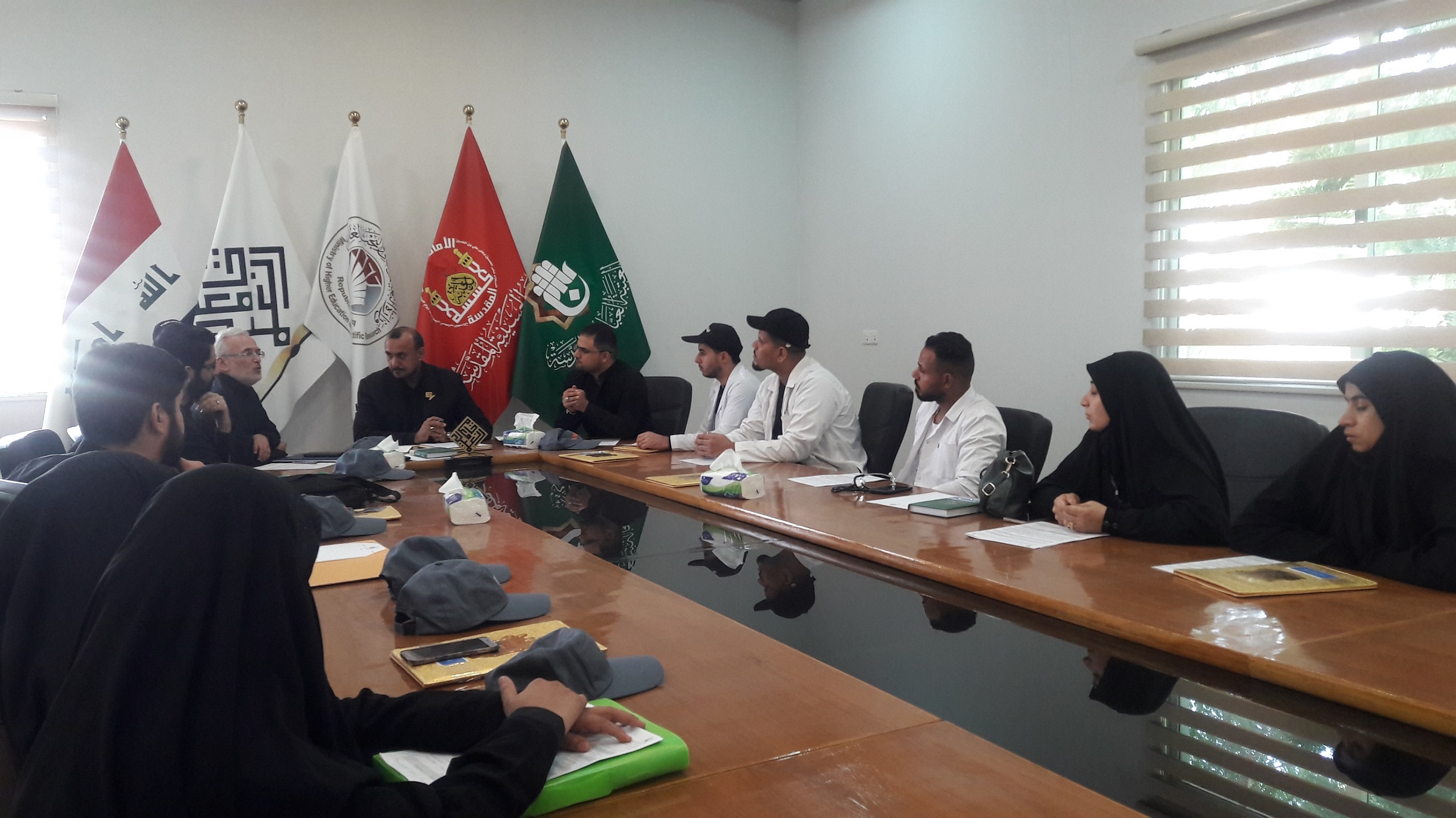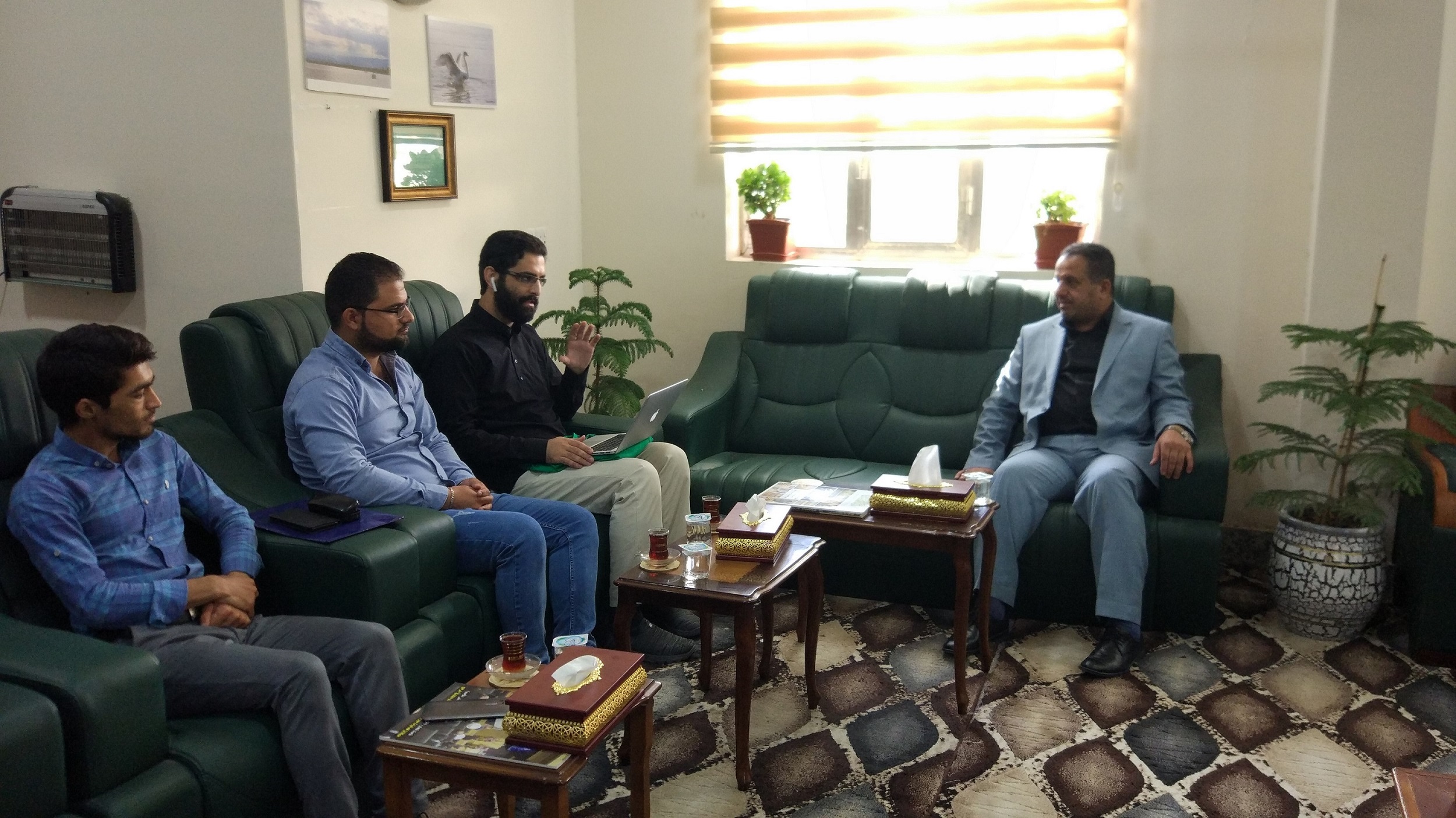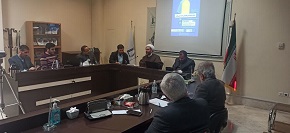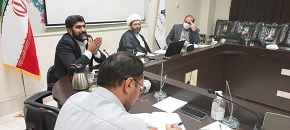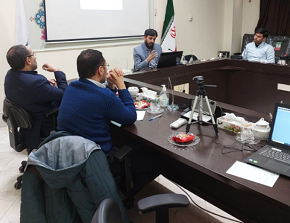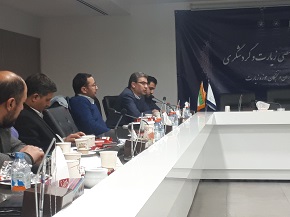- Hits: 143
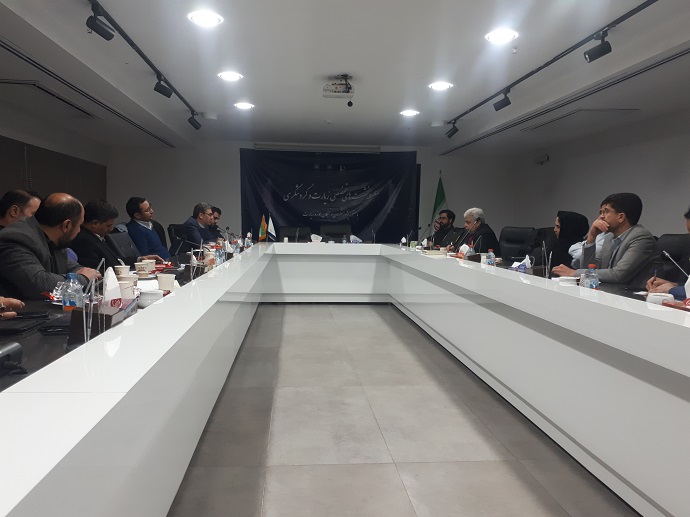
The cultural and social organization of Mashhad municipality hosted the fourth specialized meeting to review the interplay between urban design and pilgrimage-related identity of Mashhad city with Dr. Ghalandarian, faculty member of Ferdowsi University of Mashhad and Dr. Forghani, representative of the Deputy of Urban Planning and Architecture of Mashhad municipality, as speakers.
At the beginning the meeting, Dr. Qalandarian presented a theoretical discussion on the relationship between urban design and the identity associated with pilgrimage. He portrayed the multi-level guidance and control process of urban design and explained the relationship between the identity of a person and a place and stated that the identity of a person and a place overlap but are not the same. This faculty member of Ferdowsi University of Mashhad continued and said, “Unfortunately, we generally look for treatment of symptoms instead of addressing the real causes of the sickness.” Finally, he offered some considerations for use in urban design models.
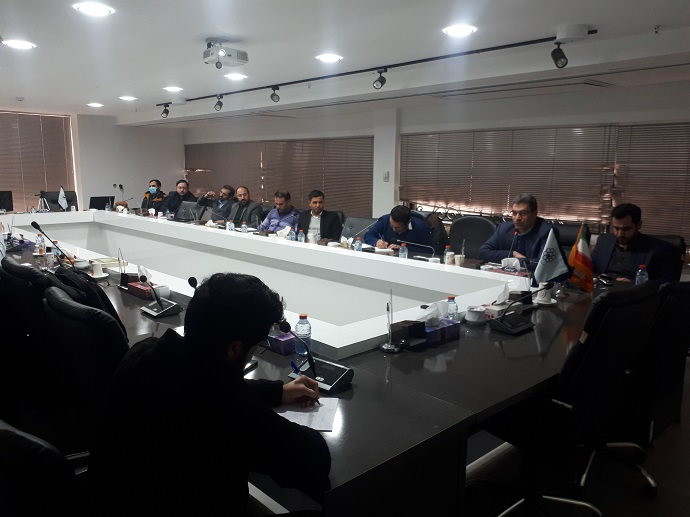
Next, Dr. Forghani stated that Mashhad was developed with the centrality of Imam Reza (AS) from the beginning and it should continue in the same way. While presenting the performance of the new municipality in relation to urban development and preserving the identity associated with pilgrimage in the city, he stated that in the new detailed plan, attempts have been made to maintain the spiritual and pilgrimage-related identity of Mashhad while observing justice and freedom. Finally, he mentioned that despite some of mistakes regarding destruction of old structures of Mashhad, we are doing our best to compensate for them.
- Hits: 367
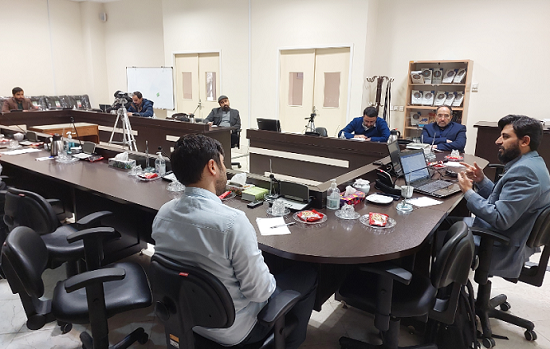
The center for Pilgrimage and Tourism Studies of Ferdowsi University of Mashhad hosted the third specialized meeting about the system of research topics on pilgrimage on 13 February 2023 with Dr. Alireza Baligh as the keynote speaker.
In this meeting, Dr. Baligh stated that despite our nearly 200-year encounter with modernity, pilgrimage to holy places, especially the shrine of Imam Reza, has remained to be a manifestation of Iranian people's adherence to the Holy. The Holy is a focal point that affects the entirety of a culture and all its elements in one way or another.
What is happening in the modern world is that the centrality of the Holy is being damaged which apparently distorts the special meaning of different places and times in relation to the Holy. Modernity creates other places and times, of course, this time with the focus on the inner sanctity of man and humanism. Referring to Arbaeen Pilgrimage as a new manifestation of pilgrimage, he said that pilgrimage transcends political geography and has created a unique cultural geography that has great potential for research.
Also, pointing out that unfortunately many of our holy places are losing their centrality, he explained the causes of this issue. Finally, in response to the idea of corpulence of rites, he stated that in a world that is becoming empty of meaning due to nihilism, man is looking for something that reproduces that meaning, and the fact that new concepts emerge from the core concepts of religion does not contradict Islamic principles
- Hits: 376
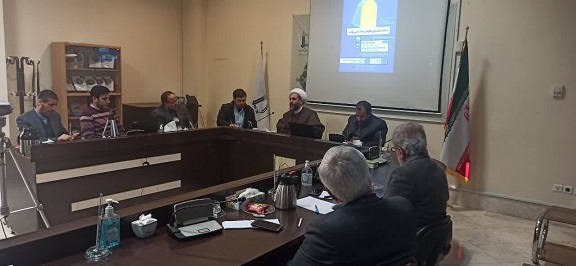
The Center for Pilgrimage and Tourism Studies of Ferdowsi University of Mashhad hosted the first meeting to review the requirements and strategic aspects of drafting the National Pilgrimage Document.
In this meeting, Dr. Bankipour, a member of the Supreme Council of the Cultural Revolution and representative of the people of Isfahan, mentioned pilgrimage as a culture-building concept which can address cultural gaps as well as the declining social capital of the country. He also stated that despite some cultural limitations of our country compared to Persian Gulf countries in attracting foreign tourists, it is possible to utilize the capacity of pilgrimage, which, of course, depends on the development of tourism infrastructure including transportation, accommodation etc. in pilgrimage sites especially the city of Mashhad.
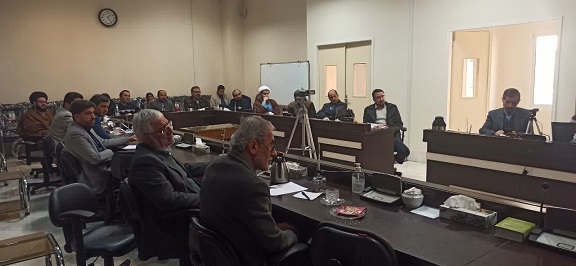
In the continuation of the meeting, Hojjat al-Islam Gonabadinejad, the deputy of Khorasan Razavi Governor for Cultural, Social and Pilgrimage Affairs also considered the National Pilgrimage Document as an opportunity for the development of pilgrimage infrastructure. He pointed out that despite the population of approximately 350 million of Twelver Shia Muslims in the world, there has been no law or document concerning world's Shiites in the field of pilgrimage since the Islamic Revolution. Drawing on the latest statistics which indicate that Iran receives 7 million foreign tourists annually, he said, “If we focused on the issue of pilgrimage and attracted even 10% of the world's Shiites pilgrims, we would have 30 million foreign tourists each year.”
In the end, a Q and A session was held.
- Hits: 385
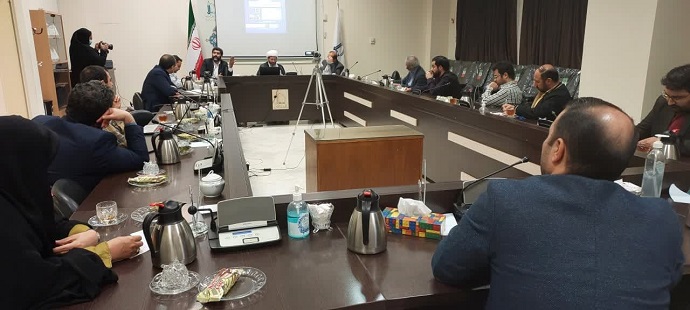
The center for Tourism and Pilgrimage Studies of Ferdowsi University of Mashhad hosted the second specialized meeting to review the requirements and political dimensions of drafting the National Pilgrimage Document on 1 March 2021 with the presence of Dr. Hajilouei, Deputy Secretary of the Supreme Council of the Cultural Revolution, Hojjat al-Islam Bazrgari Hashemi, advisor to the Custodian of Astan Quds Razavi, and Dr. Nasehi, Deputy Chairman of the Cultural, Social and Pilgrimage Commission of Mashhad City Council.
At the beginning of the meeting, Dr. Hajilouei referred to the drafting of the "framework for compiling national documents in the field of culture" in the Supreme Council and said, “we entrusted drafting of documents to the activists and experts in the field of documents and we are trying to prevent the direct involvement of the government and institutions in writing the documents, because, in addition to mastery of experts over their own fields, we will be successful in the implementation of the documents by the stakeholders when they have an active role in the drafting them.
Furthermore, Dr. Nasehi mentioned that despite the presence of about 20 cultural organizations in Mashhad, public attention is only drawn to the municipality when cultural work is involved. He continued and said, “However, once we intend to establish cultural policies in the municipality, we are prohibited from doing so and we are told that we only need to announce the policies. Therefore, the role of all stakeholders as well as people should be defined in drafting the national pilgrimage document.”
In the end, emphasizing the need to expedite the writing of the documents, Hojjat al-Islam Bazrgari Hashemi stated that in doing so, attention must also be paid to previous works and documents such as the document for the quantitative and qualitative development of pilgrimage.
- Hits: 732
Assessing the Health Condition of Arbaeen Pedestrian Pilgrims Along with the great ceremony of Arbaeen pilgrimage walk
Along with the great ceremony of Arbaeen pilgrimage walk, a research project titled as "Assessing the Health Condition of Arbaeen Pedestrian Pilgrims" was launched in Karbala.
According to the center of Pilgrimage and Tourism public relations in Ferdowsi University of Mashhad, the project aims at determining the quality of pilgrims’ health condition in physical, social, spiritual and mental terms, as well as a clear classification of pilgrims’ health issues during the Arbaeen pilgrimage in Iraq.
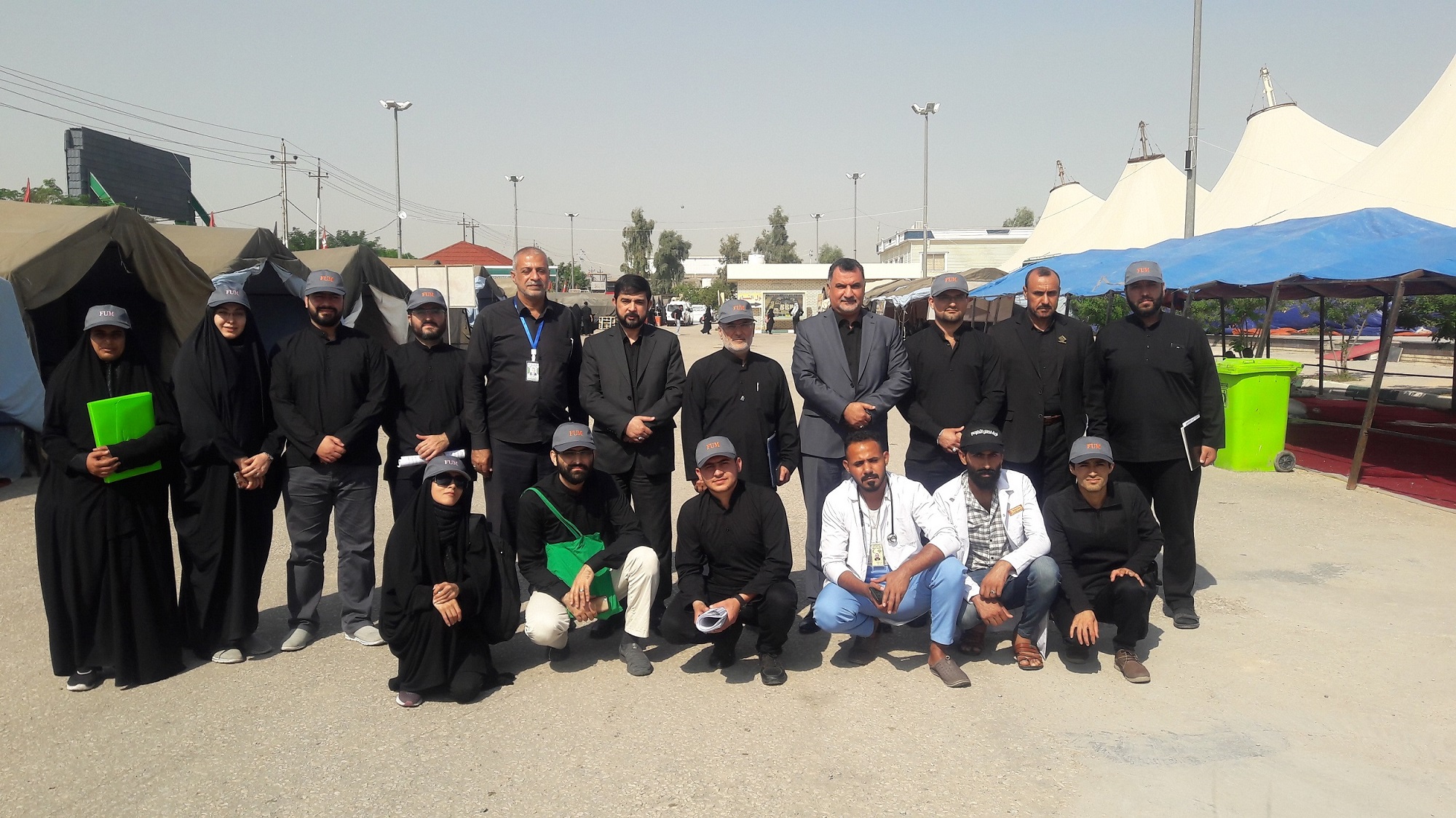
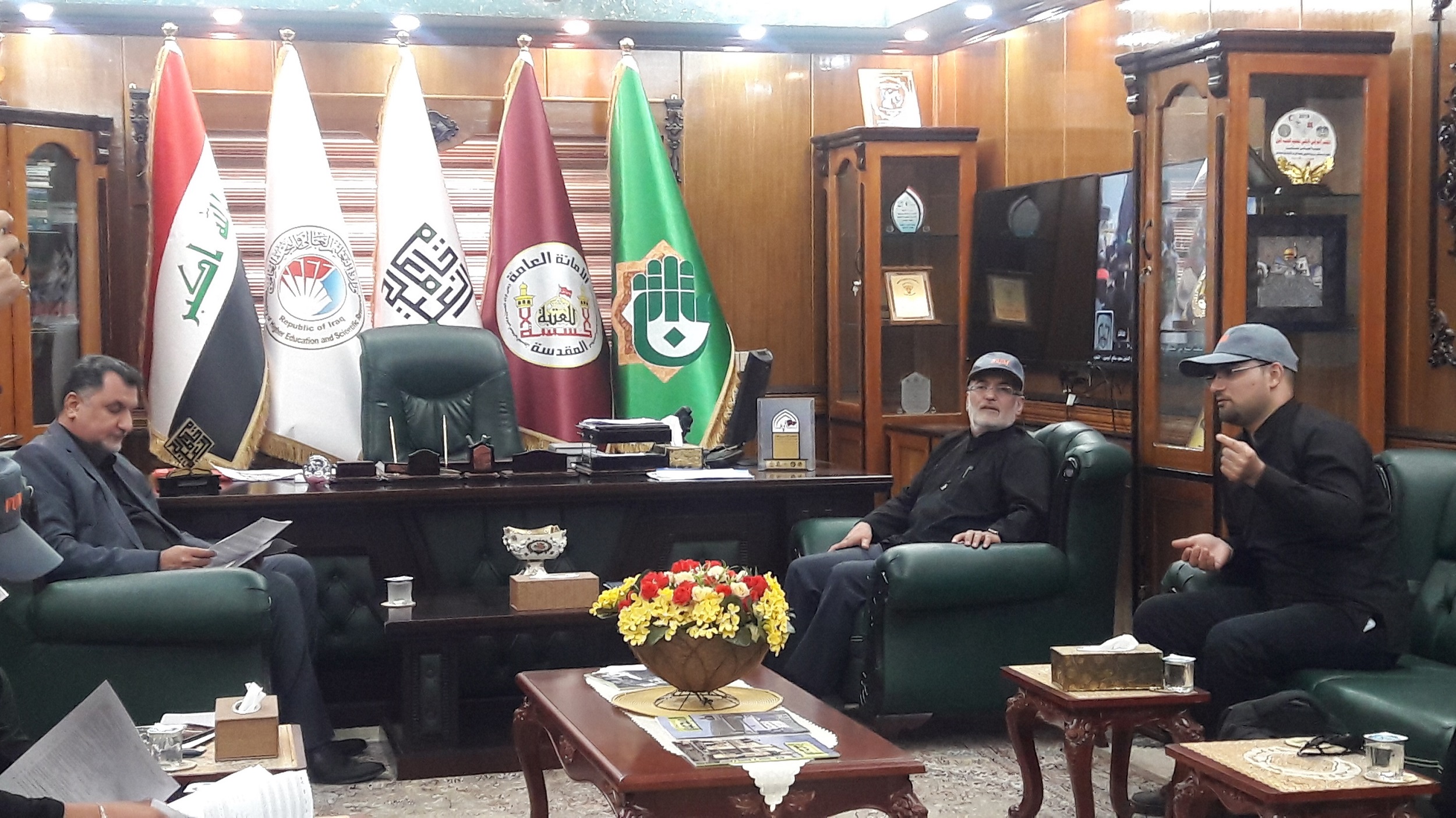
This research project is the result of an agreement between Ferdowsi University of Mashhad and Al-Amid University of Karbala under the supervision of Dr. Ali Yousefi, Associate Professor of Sociology of Religion and director of the center of Pilgrimage and Tourism.
Data collection of this project was done through questionnaires and interviews with more than 1500 Arbaeen pilgrims in Iraq, coming from different countries in three languages of Persian, Arabic, and English. The project involved a 20-person research group both from Iran and Iraq, and the data were collected over ten days on the paths leading to Karbala. In addition to the international publication, it should be noted that the outcome of this research is going to be presented during a scientific meeting, and then will be published on the center of Pilgrimage and Tourism website
